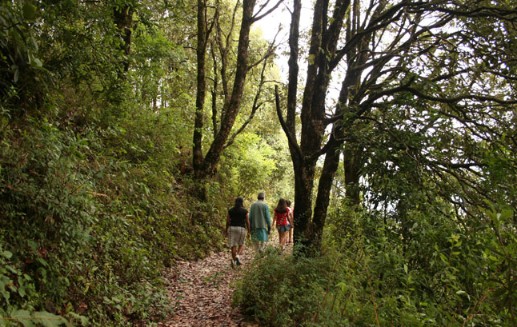If you thought one person’s efforts couldn’t make a difference to the environment around us, meet Radhika Bhati Datta, a woman in her 40s, passionate about saving the forest in Kumaon.
Love at First Sight
Radhika first came to Kumaon when she was 8 years old with her father Narendra Singh Bhati. Belonging to the royal family of Rajasthan, she instantly fell in love with the place and adopted the forest as her own. “I met a postmaster on my way up to the forest who looked very sad. When I asked him the reason, he said, “Jungle mein aag lagi hai… chidiyon ke ghonsle jal jayenge.” That was my first lesson in ecology. I understood how everything is connected and actually felt it.”
Many years later, when I had completed my schooling and was still deciding what I wanted to study further or really do with my life, it is here that I came for my soul-searching. Realizing little that one day these forests would be home.
Home in the Hills
It was in 1998 that Radhika decided to move to her Sanctuary in the Hills with her daughters. A couple of years later, she decided to open the doors of her home (and her heart) to guests from around the world. “I wanted to share with the world that it is possible to live in harmony with nature if we try. What better way than to show them by practically living the balanced life,” she shares.
Lesson in Ecology
Guests actually live in the midst of a 100-acre forest, watching the sun rise over the mountains from their window, gorge on local fruits, participate in growing rajma in the field or watch the starlit sky at night. They can trek right upto the river (3.5 km), or have a picnic in the middle of the forest with home-made lemonade and jam sandwiches. Those who do not like walking can hire a pony (on prior request).
However, those not so adventurous can read a book in the conservatory that opens out into the garden and breathe in some fresh air. Or soak in the naturally (Solar) heated pool as they admire the nature around from the covered glass walls. “Living amidst nature, even for a few days, can actually be an eye-opener for them. It helps them actually feel that they are a part of the environment, and most of them go back being much more sensitive to their environment,” shares Radhika.
Nurturer at heart
Radhika herself is doing her bit for the environment. Whether it is growing local trees like Tusaru, Utish, Robedandrum, Oak, Godhila or educating the locals about agriculture, giving them employment, or putting her foot down (along with locals) to protect and preserve the forest from builders who only want to make a quick buck, this feisty lady has done it all. “The British had overgrown Pine Trees in the Hills as they needed it’s wood to make train seats. But the Pine is a water soaking plant. Hence, every monsoon I plant some local, spring-generating trees in the forest along with the locals,” shares the caretaker. Mention it to her that she almost sounds like the forest is her baby, and she is quick to correct, “It is the other way round. I have been adopted by the forest.”
Children of the Soil
Today choosing to live in the forest with her daughters, away from the Din of the city, Radhika says she misses nothing of the city life. “Yes, they do have to travel an extra mile to get to school every day, but the fresh air of the mountains and the local food keeps them healthy,” she shares. Growing up on the farm with the local community makes sure they are rooted in the culture and sensitive to the environment. “I prefer them playing in the soil, or helping on the farm rather than being hooked on to their I-pads 24X7.” “I think I have the dream life,” she ends.
If you want to experience living in harmony with nature at this Sanctuary in The Hills, click https://bit.ly/2PVcLOo
This article is in association with The Unhotel






